Assistive technology has redefined possibilities for individuals with disabilities, empowering them to overcome barriers and lead more independent lives. These devices are more than just tools—they are lifelines that enhance mobility, communication, and everyday functionality. From wearable devices to cutting-edge robotics, assistive technology continues to evolve, offering innovative solutions that change lives in profound ways.
In this article, we’ll explore the transformative impact of assistive gadgets, the technology driving these innovations, and how they contribute to independence and inclusivity. Whether you’re an individual seeking solutions or a business looking to better understand the needs of your audience, this guide will provide actionable insights into the power of assistive technology.
The Role of Assistive Technology in Modern Life
Assistive technology bridges the gap between limitations and possibilities, enabling individuals to perform tasks that might otherwise be challenging. Its applications extend across various domains, including healthcare, education, workplace accessibility, and personal living. These technologies are not one-size-fits-all—they are tailored to meet the unique needs of users, ensuring that everyone has access to the tools they need to thrive.
Empowering Mobility and Independence
For individuals with mobility challenges, assistive devices such as prosthetic limbs, wheelchairs, and exoskeletons have revolutionized what it means to move freely. These gadgets are designed to restore mobility, reduce physical strain, and enhance overall quality of life.
Advanced prosthetics, for instance, now integrate myoelectric technology, which uses electrical signals from the user’s muscles to control movement. This allows for a more natural and intuitive experience, enabling users to perform tasks with precision and ease. Similarly, robotic exoskeletons are providing individuals with spinal cord injuries the ability to walk again, transforming rehabilitation and mobility therapy.
For businesses, investing in research and development of user-friendly mobility devices not only addresses a critical need but also establishes a brand as a leader in innovative solutions. Partnering with rehabilitation centers and offering hands-on training for users further enhances the effectiveness and adoption of these technologies.
Enhancing Communication
Communication is a fundamental human need, and assistive technology plays a vital role in enabling individuals with speech or hearing impairments to express themselves. Speech-generating devices (SGDs) and augmentative and alternative communication (AAC) tools are helping users communicate effectively, breaking down social and professional barriers.
For example, devices like eye-tracking systems allow individuals with severe motor impairments to type messages using only their gaze. Apps with voice synthesis features provide users with the ability to “speak” through their smartphones, making daily interactions more seamless.
Businesses can contribute by developing affordable and accessible communication tools or collaborating with education systems to provide devices for students with communication challenges. Highlighting the real-life impact of these gadgets through user testimonials can inspire broader adoption and support.

Enabling Full Participation in Society
The ultimate goal of assistive technology is to provide tools that enable individuals with disabilities to engage with the world on their own terms. For example, a hearing-impaired student equipped with speech-to-text software can participate actively in a lecture, ask questions, and share insights without feeling left out.
Similarly, an individual with limited mobility using a powered wheelchair can navigate urban environments independently, from commuting to work to attending social events.
These tools do more than address immediate functional needs—they redefine what independence and participation mean. Businesses that develop or support these technologies help create a world where everyone can contribute their unique talents and perspectives.
For example, companies in the travel or hospitality industry could integrate assistive technology into their services, such as offering accessible navigation tools for guests or employees with disabilities.
Supporting Caregivers and Families
Assistive technology also plays a critical role in supporting caregivers and families. Devices such as home monitoring systems or automated medical dispensers provide peace of mind to caregivers by ensuring that their loved ones are safe and well-cared for, even when they cannot be physically present.
For instance, a parent caring for a child with a disability might rely on an app that monitors the child’s health parameters or sends alerts in case of emergencies. These technologies reduce caregiver burden and enhance the overall quality of life for families.
Businesses can tap into this market by creating products designed not just for users but also for their support networks. Offering educational programs, webinars, or demonstrations that explain how these devices benefit caregivers can position a business as a comprehensive solution provider.
Driving Workplace Inclusion
In the professional sphere, assistive technology is leveling the playing field, enabling individuals with disabilities to pursue careers, excel in their roles, and contribute meaningfully to their organizations. Tools like screen readers, voice recognition software, and adaptive hardware ensure that employees with disabilities can perform their tasks efficiently.
This shift has profound implications for businesses. By investing in workplace accessibility through assistive technology, companies not only meet legal compliance standards but also foster an inclusive culture that attracts diverse talent.
Mental Health Tips for Navigating Disability ChallengesBusinesses that actively demonstrate their commitment to accessibility—such as providing assistive tools during the recruitment process—send a powerful message about their values.
Revolutionizing Accessibility with Smart Technology
The integration of smart technology into assistive devices has transformed accessibility, offering users greater autonomy and convenience. From AI-driven features to IoT (Internet of Things) connectivity, these advancements are enhancing functionality and creating a more inclusive world.
Smart Home Solutions for Independent Living
Smart home technology has redefined how individuals with disabilities interact with their living environments. Voice-activated assistants, such as Alexa or Google Assistant, allow users to control lights, appliances, and security systems with simple voice commands. This technology eliminates the need for physical interaction, providing significant support for individuals with limited mobility or dexterity.
Additionally, smart home systems can be customized to meet specific needs. For instance, smart doorbells equipped with video feeds enable users to see and communicate with visitors remotely, ensuring both convenience and security. Similarly, automated temperature controls and adaptive lighting systems help create a comfortable environment with minimal effort.
For businesses, offering installation and support services for these devices enhances user confidence and satisfaction. Collaborating with tech developers to design tailored solutions for accessibility ensures products resonate with the target audience and address real-world challenges.
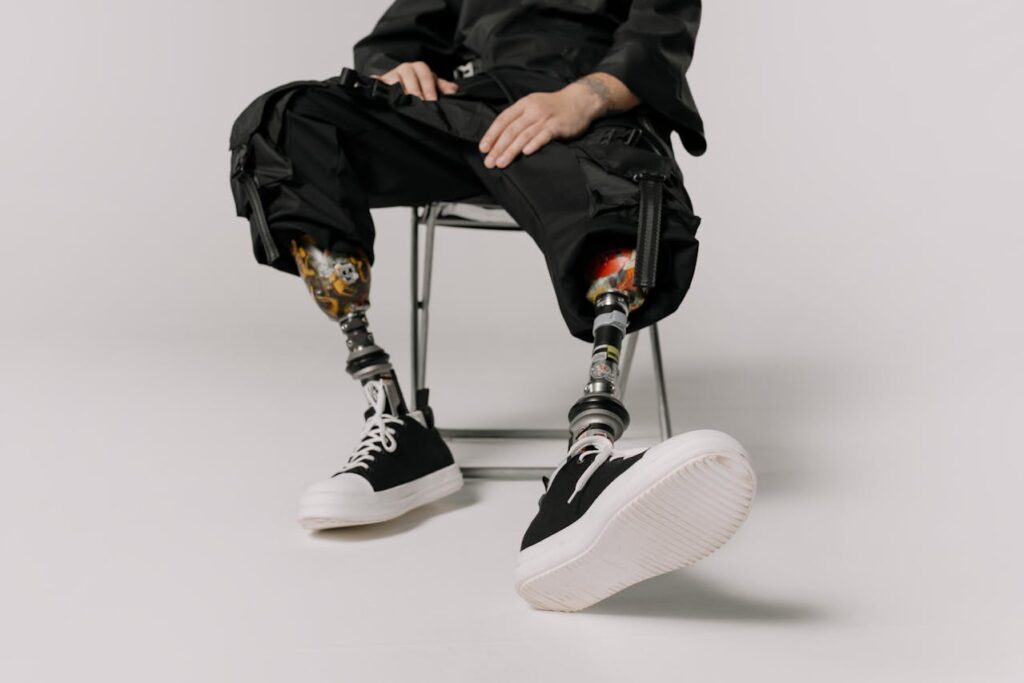
Wearable Assistive Devices
Wearable technology is at the forefront of assistive innovation, providing discreet and effective solutions for various disabilities. Devices like smartwatches with health monitoring features allow users to track vital signs, receive medication reminders, and even detect falls in real-time.
For individuals with visual impairments, wearable devices equipped with sensors and haptic feedback provide guidance while navigating unfamiliar spaces. These gadgets use GPS, object detection, and audio prompts to offer a safer and more independent experience.
Businesses entering the wearable tech market can prioritize accessibility by incorporating features that cater to diverse needs. Partnering with disability advocacy groups for product testing ensures designs are inclusive and user-friendly.
Transforming Education and Employment
Assistive technology has made significant strides in education and the workplace, empowering individuals with disabilities to participate fully in these spheres. By removing barriers to learning and productivity, these devices foster inclusivity and equal opportunities.
Assistive Tools in Education
Students with disabilities often face unique challenges in accessing education, but technology is bridging this gap. Tools like screen readers, speech-to-text software, and digital magnifiers enable students with visual or hearing impairments to engage with learning materials more effectively.
In classrooms, interactive whiteboards and specialized educational apps cater to students with cognitive or developmental disabilities, providing tailored learning experiences. For instance, gamified platforms help students build essential skills while keeping them engaged.
Educational institutions and businesses can collaborate to ensure assistive devices are integrated into classrooms seamlessly. Offering training for educators and creating subsidized programs for students from low-income families expands the reach of these technologies.
Empowering Professionals
In the workplace, assistive technology is enabling individuals with disabilities to excel in their careers. Tools like adaptive keyboards, voice recognition software, and ergonomic workstations create an inclusive environment that supports productivity and comfort.
For example, employees with mobility impairments benefit from adjustable desks and chairs that accommodate their needs, while remote work solutions allow greater flexibility. Communication tools such as captioning software ensure inclusivity during virtual meetings, fostering collaboration among all team members.
Businesses committed to diversity and inclusion can lead the way by adopting assistive technology and promoting its benefits. Providing workplace assessments and personalized recommendations for employees ensures everyone has the resources to thrive.
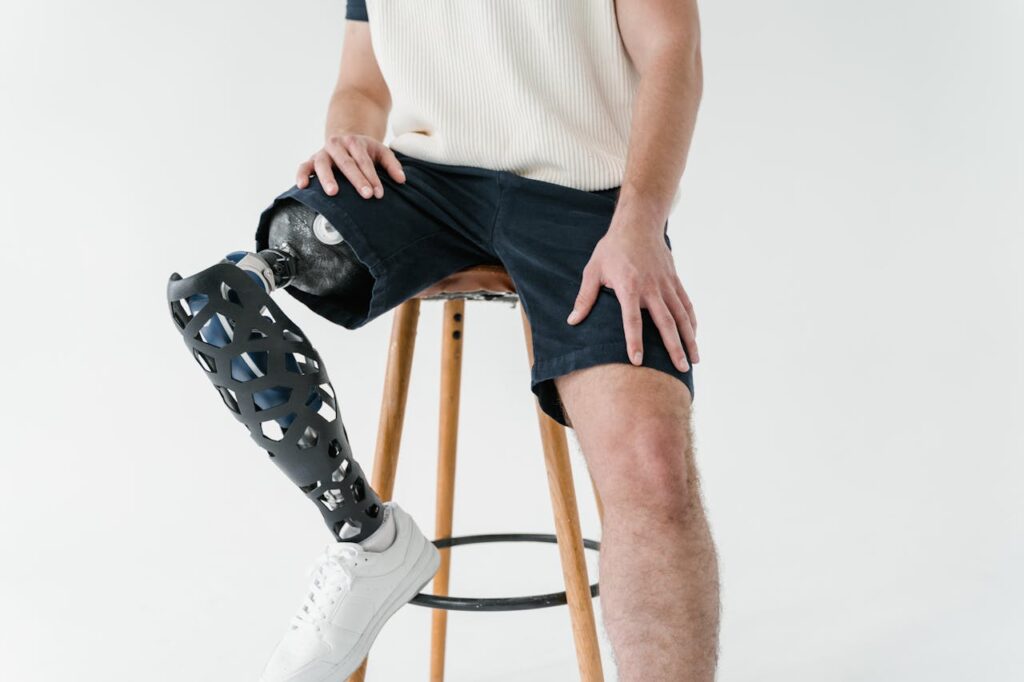
Healthcare Innovations: Enhancing Quality of Life
Assistive technology has transformed healthcare for individuals with disabilities, providing solutions that improve diagnosis, treatment, and overall well-being. These advancements not only enhance physical health but also support mental and emotional resilience.
Assistive Devices in Rehabilitation
Rehabilitation plays a crucial role in helping individuals regain functionality and independence after injury or illness. Advanced assistive devices, such as robotic exoskeletons and virtual reality (VR) rehabilitation systems, are revolutionizing this process.
Robotic exoskeletons enable individuals recovering from spinal cord injuries or strokes to practice walking with support, promoting muscle memory and improving mobility over time. Similarly, VR-based therapy creates immersive environments that encourage motor skills development and cognitive engagement in a controlled setting.
Businesses specializing in rehabilitation technology can collaborate with clinics to offer these solutions, providing patients with access to cutting-edge tools. Additionally, educational campaigns that highlight success stories in rehabilitation build trust and inspire adoption.
Monitoring and Preventative Care
Smart health monitoring devices are empowering individuals with disabilities to take charge of their health. Wearable sensors track vital signs such as heart rate, blood pressure, and oxygen levels, alerting users to potential health concerns in real time.
For individuals with chronic conditions, these devices provide early warnings, enabling timely medical interventions and reducing hospital visits. For instance, individuals with diabetes can use continuous glucose monitors that sync with their smartphones, offering insights and reminders to maintain optimal health.
Businesses can contribute by creating accessible healthcare apps that integrate seamlessly with assistive devices, providing users with comprehensive health management tools. Partnering with healthcare providers to offer these solutions ensures they reach a wider audience while enhancing patient outcomes.
Mental Health Support
Mental health is an integral part of well-being, and assistive technology is making mental health care more accessible. Apps designed for mindfulness, anxiety management, and therapy sessions provide users with tools to manage stress and emotional challenges.
For individuals with speech or hearing impairments, therapy platforms that use text-based communication or visual cues ensure inclusivity. Virtual counseling services, which became increasingly popular during the pandemic, have continued to grow, offering convenient and private options for mental health support.
Businesses entering the mental health space can focus on creating accessible platforms that cater to diverse user needs. Providing financial assistance or partnerships with mental health organizations demonstrates a commitment to holistic well-being.

Promoting Accessibility Through Collaboration
The impact of assistive technology extends beyond individual users—it creates ripple effects that influence communities, industries, and societies. Collaboration among businesses, governments, and advocacy groups ensures that these technologies reach their full potential.
Partnering for Innovation
Collaboration is key to driving innovation in assistive technology. Businesses can partner with research institutions, tech developers, and disability organizations to co-create solutions that address real-world challenges. For example, a prosthetics manufacturer might work with universities to explore advancements in material science, creating lighter and more durable devices.
Sharing resources, insights, and expertise accelerates the development process and ensures products are user-centered. Businesses that foster such collaborations gain a competitive edge while contributing to meaningful advancements.
Expanding Reach Through Awareness
Awareness campaigns are essential for promoting the adoption of assistive technology. Many individuals remain unaware of the solutions available to them, either due to lack of information or perceived barriers such as cost.
Businesses can take an active role by launching educational initiatives that showcase the transformative impact of assistive devices. These efforts might include product demonstrations, webinars, or collaborations with influencers in the disability community. Highlighting success stories and practical use cases helps potential users envision the benefits in their own lives.
The Role of Affordability and Accessibility
One of the most significant challenges in the adoption of assistive technology is affordability. While advancements have made these devices more sophisticated and impactful, their costs can often put them out of reach for many individuals. Addressing this issue requires businesses, governments, and nonprofits to work together to make these life-changing tools more accessible.
Reducing Costs Through Innovation
Innovation plays a vital role in making assistive technology more affordable without compromising quality. Businesses that invest in cost-efficient manufacturing techniques, modular designs, and scalable production models can significantly lower the price of devices. For example, prosthetic limbs made using 3D printing technology are not only customizable but also far less expensive to produce than traditional models.
Companies can also focus on creating modular devices that allow users to purchase only the components they need or upgrade specific parts over time. This approach provides a more affordable entry point while maintaining long-term functionality. Highlighting these innovations in marketing campaigns demonstrates a commitment to inclusivity and affordability.
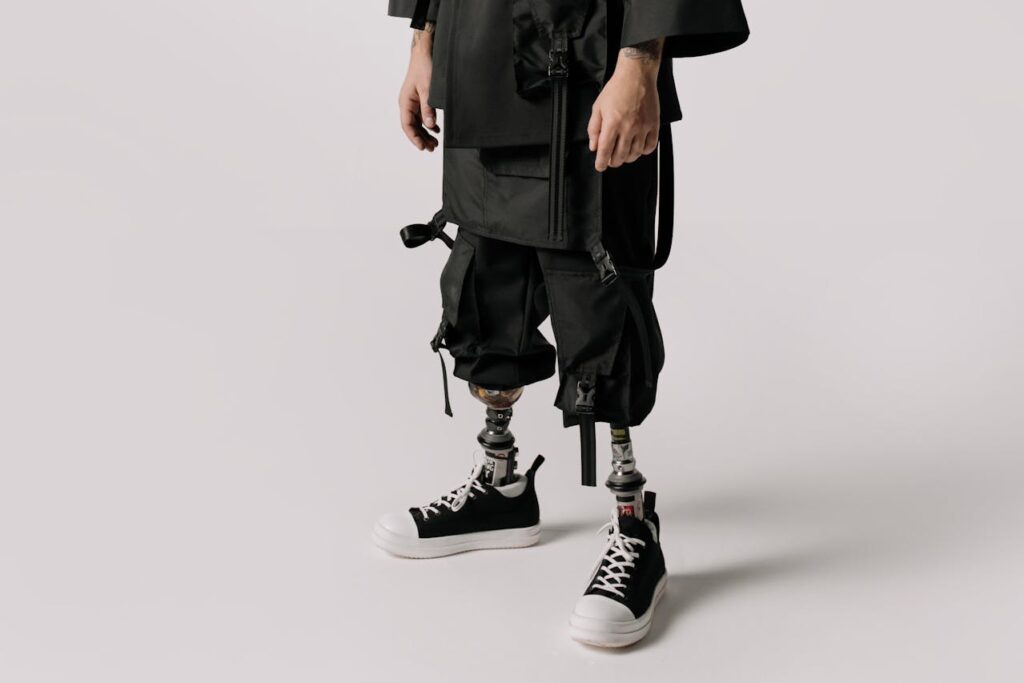
Partnering with Governments for Subsidies
Government subsidies and financial assistance programs are critical in bridging the affordability gap for assistive devices. By partnering with governments, businesses can ensure that their products are included in public assistance schemes, enabling more people to access them.
For example, working with government programs that offer tax exemptions or funding for assistive devices ensures that eligible individuals can afford essential tools. Businesses can also advocate for the inclusion of their products in health insurance plans, making them accessible to a broader audience.
Offering guidance on how users can apply for subsidies or insurance coverage, through workshops or online resources, adds value and builds trust with customers.
Nonprofit Collaborations
Nonprofits and charitable organizations are invaluable allies in making assistive technology accessible to underserved communities. Collaborating with these organizations to distribute devices at reduced or no cost can have a profound impact, particularly in rural or economically disadvantaged areas.
Businesses can also work with nonprofits to identify gaps in accessibility and develop targeted solutions. For instance, donating devices for trial use or offering free training programs through nonprofit partners ensures that individuals are both equipped and educated on how to use the technology effectively.
A Glimpse Into the Future of Assistive Technology
As technology continues to evolve, the future of assistive devices holds exciting possibilities. Emerging trends such as artificial intelligence, robotics, and bioengineering are set to redefine the boundaries of what assistive technology can achieve.
Artificial Intelligence and Personalization
AI is already transforming assistive devices by making them smarter and more intuitive. From prosthetic limbs that learn and adapt to users’ movement patterns to AI-driven apps that provide real-time assistance for navigation, the potential is limitless.
In the future, devices equipped with AI could anticipate users’ needs and adjust automatically, offering a seamless experience. For example, a powered wheelchair might detect uneven terrain and adjust its suspension in real-time to ensure a smoother ride. Businesses investing in AI-driven innovations not only stay ahead of the curve but also provide users with cutting-edge solutions that enhance their independence.
Robotics and Advanced Mobility
Robotics is paving the way for advanced mobility solutions, such as bionic limbs that mimic natural movement and robotic exoskeletons that enable paralyzed individuals to walk. These technologies are not just functional—they are empowering, restoring a sense of agency and confidence to users.
The integration of robotics into assistive technology also opens up new possibilities for remote operation and telepresence. For instance, individuals with limited mobility could use robotic systems to perform tasks or participate in activities from a distance. Businesses that embrace robotics as part of their product offerings can revolutionize how users experience mobility and interaction.
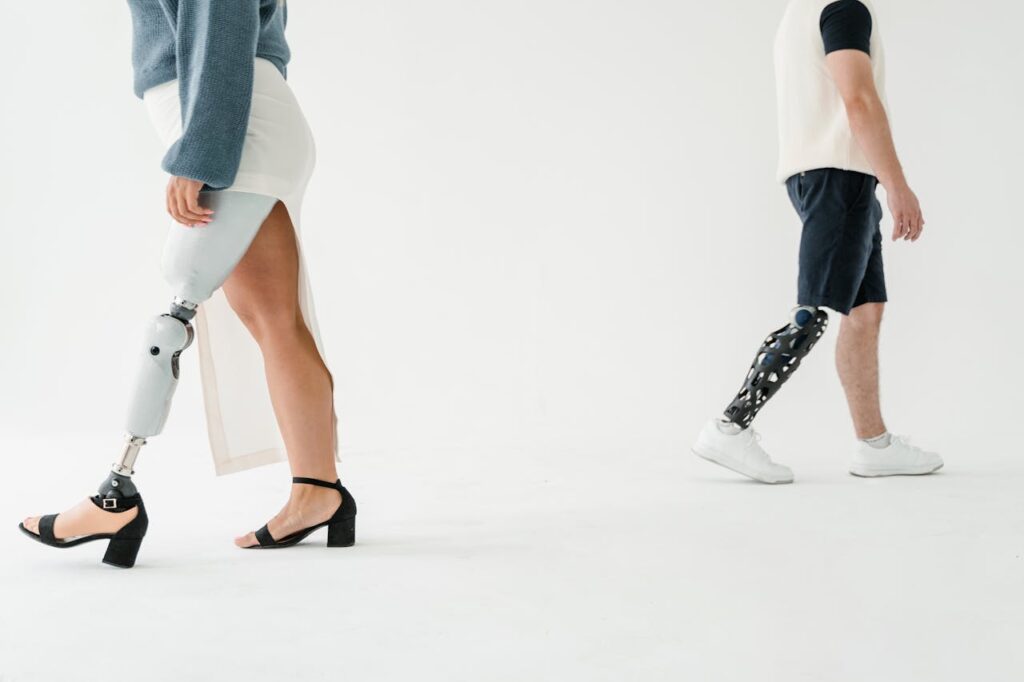
Bioengineering and Integration
Bioengineering is set to bring about the next wave of breakthroughs in assistive technology. Neural interfaces that connect directly to the user’s nervous system could enable more precise control of prosthetics or assistive devices. This level of integration would blur the lines between technology and the human body, offering unprecedented functionality.
For businesses, staying informed about developments in bioengineering and collaborating with research institutions ensures they remain at the forefront of these innovations. Educating users about the benefits and possibilities of these emerging technologies fosters excitement and trust.
Conclusion
Assistive technology has become a cornerstone of independence and inclusion, enabling individuals with disabilities to navigate their lives with greater confidence and ease. From simple tools that enhance daily living to groundbreaking innovations that redefine mobility and communication, these gadgets are changing lives in profound ways.
For individuals, understanding and embracing these technologies opens up a world of possibilities, providing the tools needed to overcome barriers and pursue aspirations. For businesses, the opportunity lies in creating solutions that are not only functional and innovative but also accessible and affordable.
By prioritizing user-centric design, collaborating with partners, and investing in emerging trends, companies can contribute to a future where assistive technology is a universal enabler of empowerment and inclusion. Together, we can harness the power of technology to build a world where everyone has the opportunity to thrive.



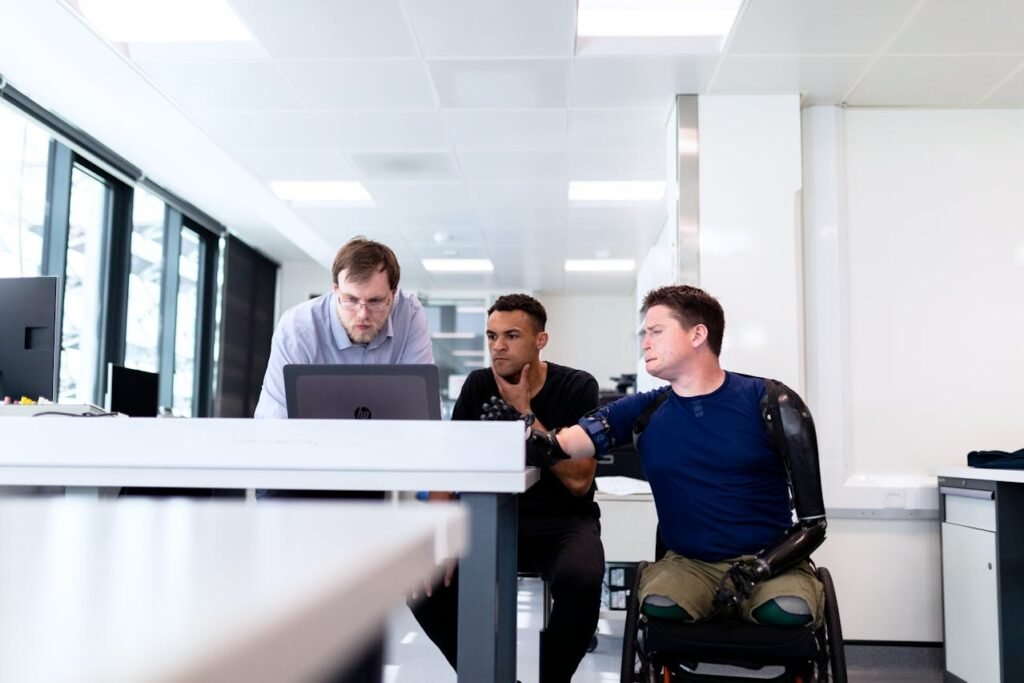
Pingback: Unlock Your Potential with Adaptive Equipment for Disabilities – Prosthetics Blog